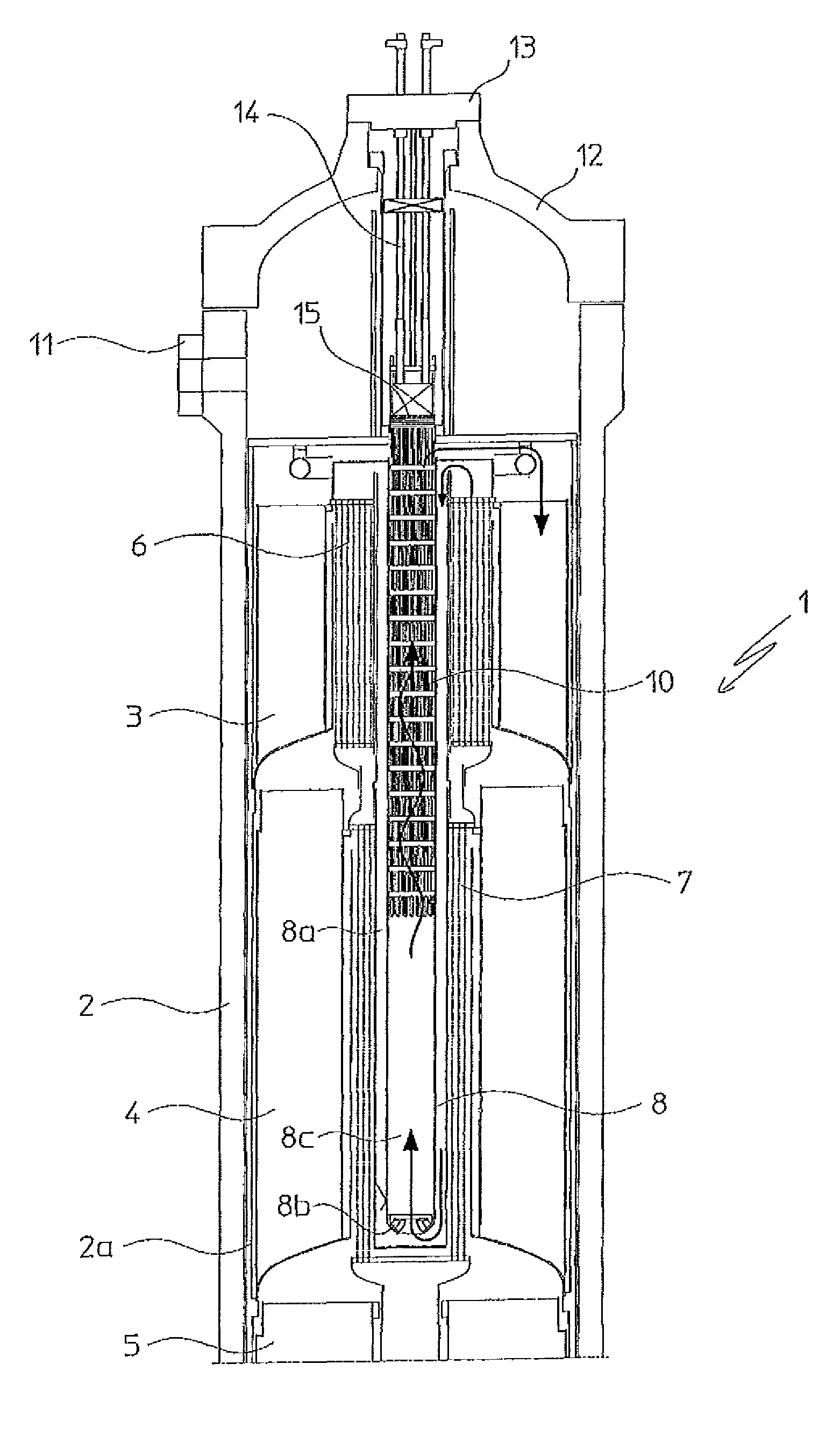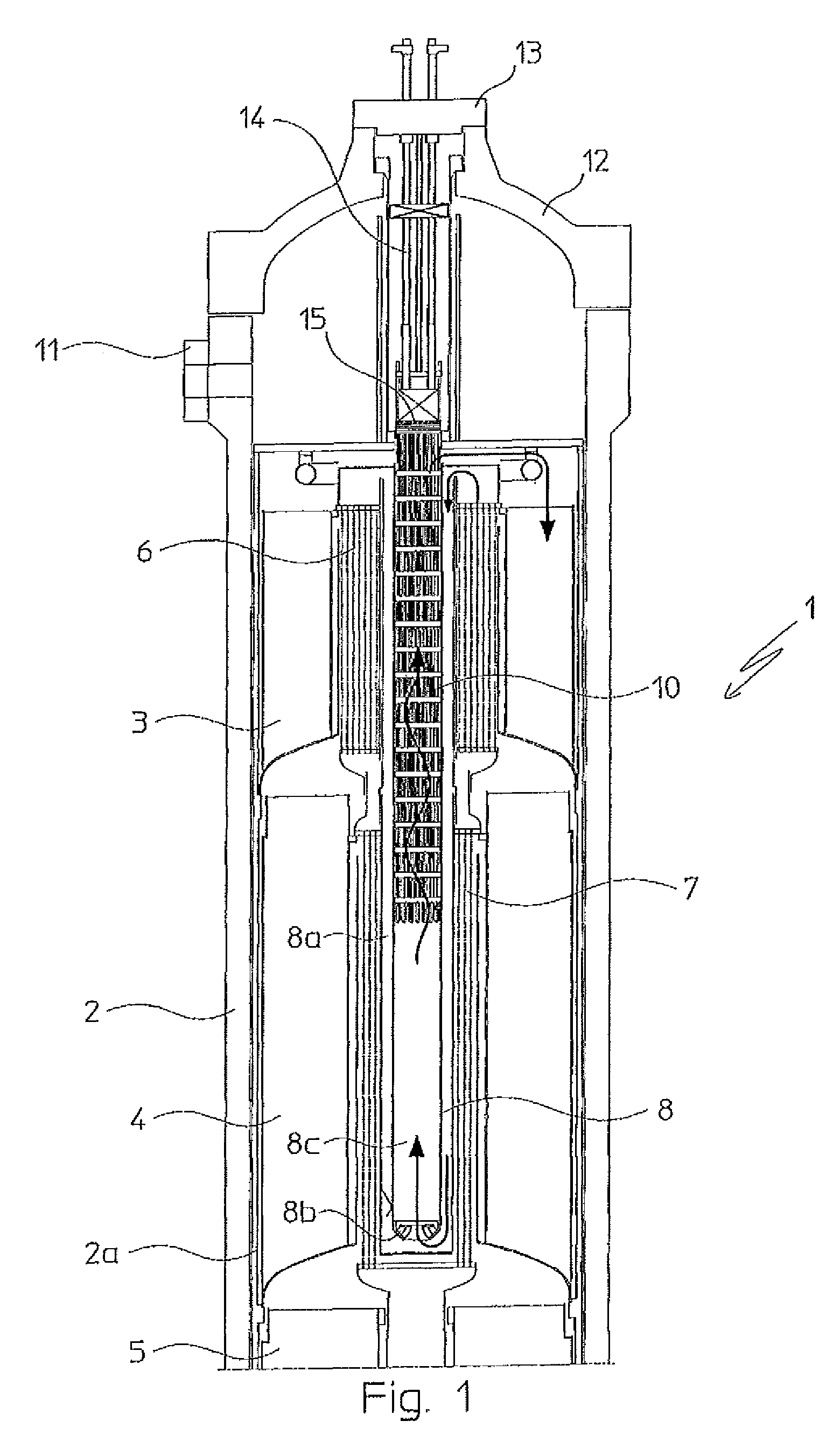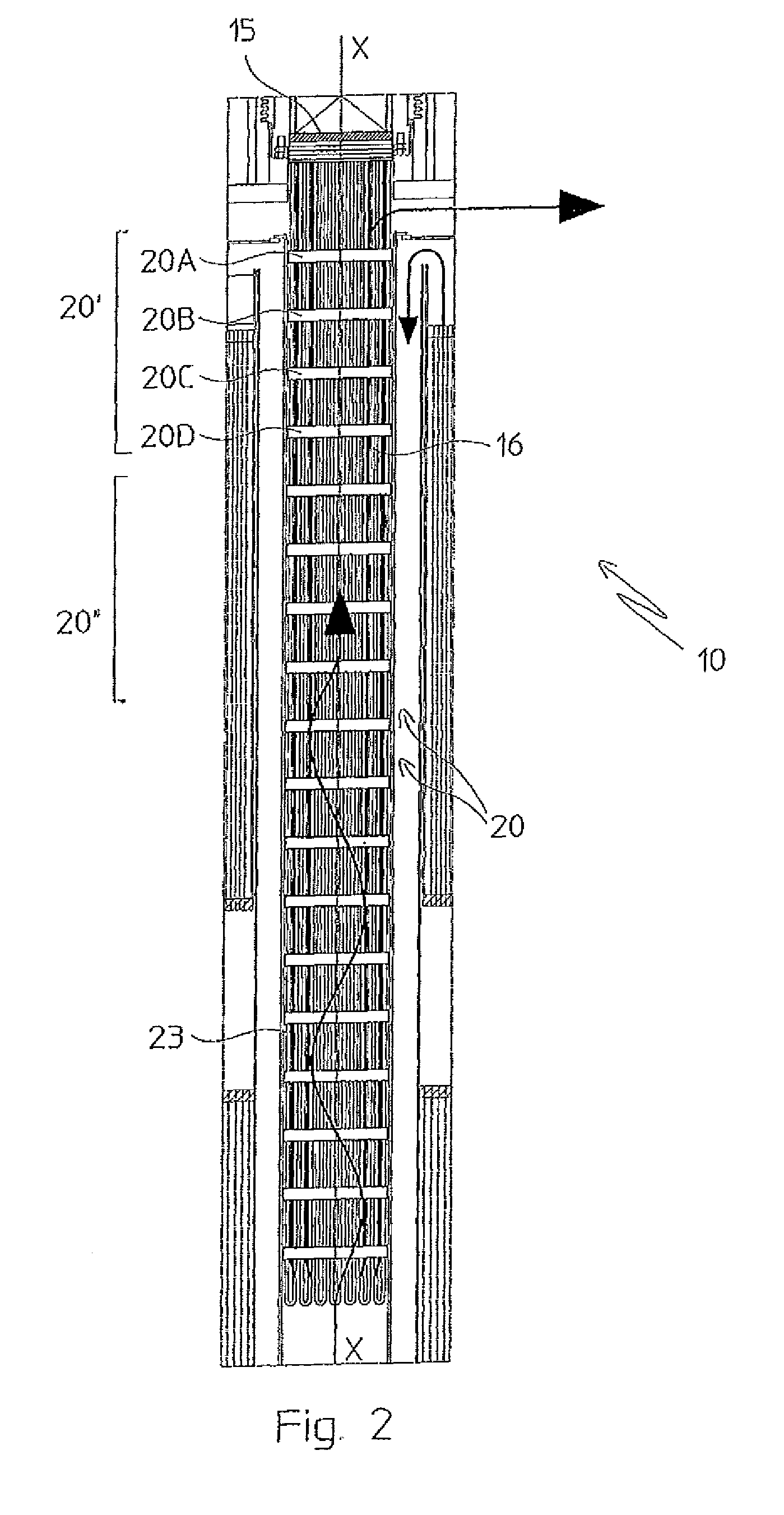Start-up heater for ammonia reactors
a technology for ammonia reactors and start-up heaters, which is applied in the field of ammonia reactors, can solve the problems of high gaseous flow speed, failure of internal start-up heaters, and inability to meet the needs of ammonia production, so as to prevent flow-induced vibrations and efficient and reliable ways
- Summary
- Abstract
- Description
- Claims
- Application Information
AI Technical Summary
Benefits of technology
Problems solved by technology
Method used
Image
Examples
Embodiment Construction
[0043]Referring to FIG. 1, a three-bed ammonia reactor or converter is shown as 1, comprising a vessel 2 containing catalytic beds 3, 4 and 5 with intermediate quenching heat exchangers 6 and 7. The reactor 1 is equipped with an internal electric start-up heater 10; a high-pressure cover 12 of the vessel 2 is also shown in FIG. 1.
[0044]The heater 10 is substantially a cylindrical equipment coaxial to the vessel 2, surrounded by a wall 8.
[0045]The main components of the start-up heater 10 are: a mounting flange 13 for coupling with the high pressure cover 12, electrical connections 14, a sheet 15 supporting a plurality of elongate heating members, extended in a direction parallel to a longitudinal axis X-X of the heater 10 itself. Said axis X-X is coincident with the axis of the main vessel 2.
[0046]In operation, the gaseous reactants enter the vessel 2 at upper inlet 11 and flow in annular space 2a, are pre-heated flowing upwards in exchangers 7 and 6, then flow in an interspace 8a a...
PUM
| Property | Measurement | Unit |
|---|---|---|
| temperature | aaaaa | aaaaa |
| pressure | aaaaa | aaaaa |
| temperature | aaaaa | aaaaa |
Abstract
Description
Claims
Application Information
 Login to View More
Login to View More - R&D
- Intellectual Property
- Life Sciences
- Materials
- Tech Scout
- Unparalleled Data Quality
- Higher Quality Content
- 60% Fewer Hallucinations
Browse by: Latest US Patents, China's latest patents, Technical Efficacy Thesaurus, Application Domain, Technology Topic, Popular Technical Reports.
© 2025 PatSnap. All rights reserved.Legal|Privacy policy|Modern Slavery Act Transparency Statement|Sitemap|About US| Contact US: help@patsnap.com



